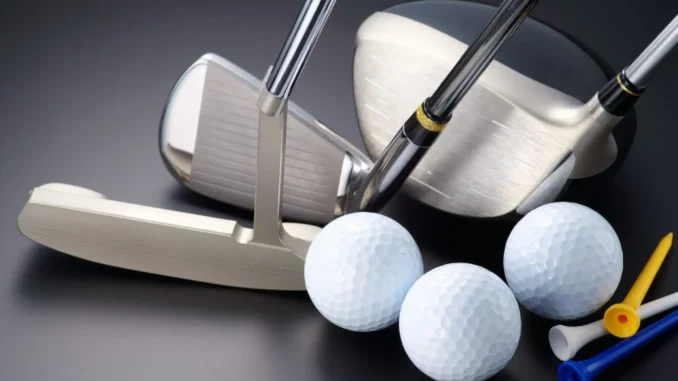
Golf, a game rich in tradition, has undergone significant changes over the years, especially when it comes to the equipment used. From the early days of wooden clubs and hand-forged irons to today’s cutting-edge, technology-driven gear, the evolution of golf equipment has played a major role in shaping how the game is played. This post takes a deep dive into the history and advancements in golf equipment, highlighting key developments that have revolutionized the sport.
The Early Days of Golf Equipment
Wooden Clubs and Handcrafted Design
In the earliest days of golf, around the 15th century, golfers used wooden clubs, often handcrafted from ash, hickory, or other durable woods. These clubs were simple and basic, with the heads made from wood and often shaped by the players themselves. The idea of a “driver,” “iron,” or “putter” didn’t exist in the way we know them today; golfers simply relied on the tools available to them.
The heads of these wooden clubs were large and flat, designed for hitting the ball long distances. However, the lack of technology and precision meant that golf was a more difficult and unpredictable game.
The Introduction of Iron Clubs
As the sport evolved, so did the equipment. By the 18th century, blacksmiths began forging iron clubs, providing players with more control and consistency over their shots. These early irons were still relatively rudimentary, but their ability to provide a more accurate strike made them a significant advancement in golf club technology.
The Rise of Steel and the Modern Era
The Birth of Steel Shafts
In the early 1900s, the introduction of steel shafts marked a significant shift in the way clubs were made. Steel shafts replaced the traditional wooden shafts, offering greater durability and strength. Players noticed an improvement in club performance, particularly in terms of consistency and distance. Steel shafts also allowed for a more flexible design, making it easier to produce clubs that suited individual playing styles.
Advancements in Clubhead Design
As the 20th century progressed, so did the technology behind clubheads. In the 1950s, golf manufacturers began experimenting with materials such as aluminum and titanium, both of which offered greater durability and lighter weights compared to previous metal alloys. The design of the clubhead became more sophisticated, with engineers focusing on improving the sweet spot—the area on the clubface that delivers the most powerful and accurate shots.
The 1970s saw the introduction of cavity-back irons, which featured a hollowed-out back that redistributed weight to the perimeter of the club. This design helped to reduce the impact of off-center hits and allowed for more forgiveness, making it easier for golfers of all skill levels to achieve solid shots.
The Role of Technology in Modern Golf Equipment
High-Tech Materials: Titanium and Carbon Fiber
In the late 20th and early 21st centuries, golf manufacturers began using high-tech materials such as titanium and carbon fiber. These materials were much lighter and stronger than traditional metals, allowing for more advanced designs that optimized performance. Titanium drivers, for example, became a staple of modern golf equipment due to their ability to offer both strength and lightweight construction. These innovations allowed for larger, more forgiving clubheads, which helped golfers hit the ball farther and with more consistency.
Carbon fiber also made its mark, particularly in the design of drivers and fairway woods. The lightweight nature of carbon fiber allowed manufacturers to increase the size of the clubhead while keeping the overall weight manageable, leading to improved power and control.
Computer-Aided Design and Custom Fitting
With the advent of computer-aided design (CAD) in the 1990s, golf equipment manufacturers could now create more precise, customized clubs. This technology allowed designers to analyze the behavior of golf clubs in a virtual space, optimizing weight distribution, shape, and aerodynamics before producing physical prototypes. As a result, clubs became more performance-driven and tailored to the needs of individual golfers.
The development of custom fitting technology has also become a game-changer in the industry. Golfers now have the ability to work with professionals who can analyze their swing and create a set of clubs that match their unique playing style. This personalized approach has helped players improve their accuracy, distance, and overall performance on the course.
The Influence of Club Adjustability and GPS Technology
Adjustable Clubs for a Customized Experience
One of the most exciting innovations in modern golf equipment is the advent of adjustable clubs. Today’s drivers, fairway woods, and hybrids offer adjustable lofts, weights, and lie angles, allowing golfers to fine-tune their clubs for specific course conditions or swing styles. These adjustable features enable golfers to make quick changes during a round, enhancing their ability to adapt to different situations and improving overall performance.
Adjustable clubs also allow golfers to experiment with different settings during practice rounds, helping them discover the optimal setup for their game. This flexibility adds another layer of customization that wasn’t available in earlier iterations of golf equipment.
GPS and Rangefinder Technology
Another game-changing development has been the integration of GPS and rangefinder technology into golf equipment. GPS watches, handheld devices, and rangefinders provide golfers with precise yardage measurements, making it easier to select the right club and plan shots. These devices take the guesswork out of distance calculations, helping players make more informed decisions on the course.
Some golf courses even use GPS technology to create detailed maps of the course layout, allowing players to better navigate hazards and pinpoint ideal landing zones. The combination of technology and data analysis has transformed how golfers approach each hole, making the game more strategic and enjoyable.
Conclusion: The Future of Golf Equipment
The evolution of golf equipment has come a long way from the days of wooden clubs and basic irons. Today’s high-tech gear—featuring lightweight materials, advanced designs, and customizable features—has made the game more accessible, enjoyable, and performance-oriented. As technology continues to evolve, it’s exciting to think about the future of golf equipment. Innovations in artificial intelligence, smart clubs, and other cutting-edge technologies may soon reshape the game even further, giving golfers more tools to enhance their skills and performance.



Leave a Reply